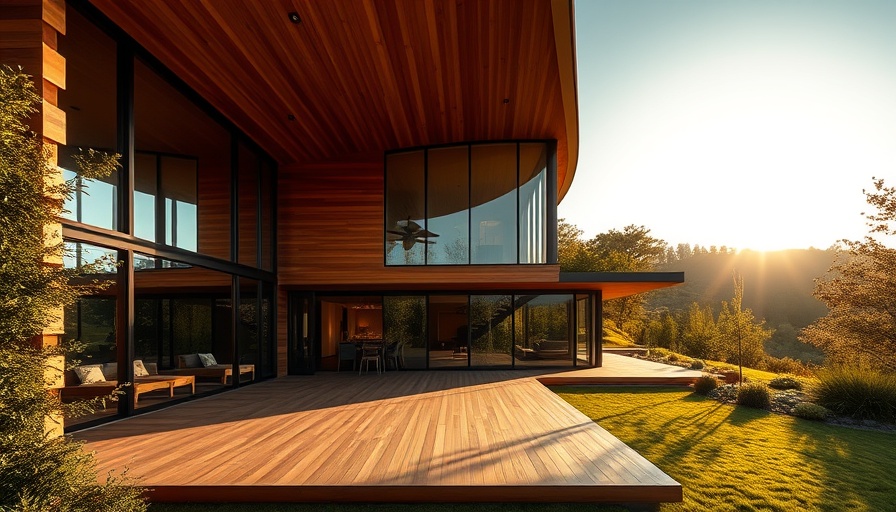
Discovering the Harmony of Chalk River House
In the serene landscape of Hampshire, Chalk River House stands as a remarkable example of how architecture can seamlessly blend with nature. Designed by Oliver Leech Architects, this family home embraces a "soft, calm and neutral palette" utilizing handmade bricks, timber, lime render, and zinc. Not only is it a visual delight, but it also serves as a powerful reminder of the impact thoughtfully designed spaces can have on our well-being.
A Space that Transforms Work from Home
The layout of Chalk River House promotes tranquility, a crucial element for anyone working remotely. The design includes two volumes—one traditional and the other modern—connected by a central stairwell that encourages movement and flow. This openness can inspire creativity, helping remote workers cultivate productive workspace environments at home. A workspace that mimics the calm found in this home can significantly enhance focus and reduce burnout, making it vital for digital nomads seeking efficiency.
The Importance of Natural Materials
Oliver Leech Architects made a deliberate choice to incorporate natural materials throughout the construction. The use of lime render, timber, and zinc not only adds to the aesthetic but also promotes well-being by creating a warm and inviting atmosphere. Ergonomic design emphasizes the significance of our surroundings. Natural materials can enhance comfort, reduce stress, and inspire creativity—key factors to consider when establishing a productive workspace in your home.
Integrating Comfortable Outdoor Spaces
One of the standout features is the outdoor terraces covered by an oak pergola, designed for al fresco dining and relaxation. Creating comfortable outdoor environments is essential for digital nomads who benefit from changing their work settings. Studies show that exposure to nature can lower stress levels and increase productivity. Implementing similar outdoor workspaces or relaxation areas can provide a beneficial balance between work and leisure.
Choosing the Right Workspace Setup
When considering your own home office, think about the layout and the materials you incorporate. The choice of softer, more muted tones—like those at Chalk River House—can contribute to a calming ambience. By strategically placing windows to maximize natural light, you can mimic Oliver Leech's approach of providing expansive views while ensuring a sense of privacy and refuge.
Connecting with Nature: A Must for Remote Workers
Chalk River House exemplifies the significance of nature in architecture. The contrasting design, with its traditional front facing a conservation area and a modern back overlooking the River Test, provides an enriching experience. Just as the house is designed to connect with its environment, incorporating elements like plants, natural light, and outdoor views in remote workspaces can greatly enhance productivity and creativity. Connecting with nature is more than aesthetics; it’s about nurturing mental health while working from home.
As digital nomads seek to optimize their remote work environments, they should take cues from the thoughtful design of spaces like Chalk River House. Embracing natural materials, prioritizing comfort, and finding ways to connect with nature through your workspace is essential. Our environment profoundly influences how we work and feel, making these considerations vital in the ever-evolving world of remote work.
For those ready to enhance their remote work experience, it's time to get creative with your workspace! Explore materials, layouts, and elements that foster a calm and productive environment inspired by architectural masterpieces like Chalk River House.
 Add Row
Add Row  Add
Add 




Write A Comment